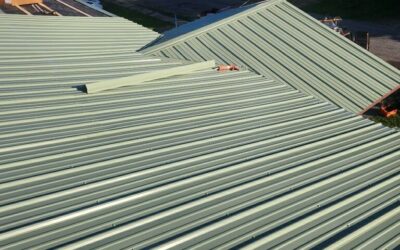Where Should Bathroom Exhaust Fans Be Vented? Everything You Need to Know
When designing or renovating a bathroom, one of the most important components that often gets overlooked is the bathroom exhaust fan. Proper ventilation is essential for maintaining air quality, preventing moisture buildup, and preserving the longevity of your home’s structure. However, the key to effective ventilation lies in where and how the bathroom exhaust fan is vented.
In this blog, we’ll dive deep into the topic of bathroom exhaust fans, why proper venting is crucial, and most importantly, where these fans should be vented to ensure your bathroom remains dry, clean, and free of mold and mildew. At S&K Construction and Remodeling LLC, we specialize in offering professional remodeling and construction services, including proper ventilation system installations to ensure your home remains safe and healthy.
Let’s explore everything you need to know about where bathroom exhaust fans should be vented and how proper venting can make all the difference for your home.
Why Are Bathroom Exhaust Fans Necessary?
Before we dive into venting specifics, it’s important to understand why bathroom exhaust fans are necessary in the first place. A bathroom exhaust fan plays a key role in removing moisture, odors, and pollutants from your bathroom, which can otherwise lead to:
- Mold and Mildew Growth: Excess moisture in the air can cause mold to grow on bathroom walls, ceilings, and floors. Mold not only affects your bathroom’s aesthetics but can also be harmful to your health.
- Structural Damage: Moisture can seep into your home’s structure, leading to wood rot, rusting, and deterioration of the drywall, which can lead to costly repairs.
- Stale Air: A bathroom exhaust fan helps eliminate unpleasant odors and prevents the air from becoming stuffy, ensuring a more pleasant and comfortable environment.
- Reduced Humidity: Removing excess moisture reduces the risk of corrosion on pipes, electrical components, and fixtures, extending the lifespan of these systems.
Proper ventilation helps to ensure the overall health of your home and prevents long-term damage.
How Does a Bathroom Exhaust Fan Work?
A bathroom exhaust fan works by drawing out moist air and odors from the bathroom, channeling it outside your home through a duct system. The fan pulls the air into the fan assembly, and the air is then directed out of the bathroom and out of your house through a vent or exhaust system. This airflow helps to reduce humidity, prevent mold growth, and maintain a more comfortable atmosphere.
In most cases, an exhaust fan is designed to work continuously when activated during showers, baths, or after using the restroom. For optimal performance, the fan needs to expel the moisture-laden air as quickly and efficiently as possible. But here’s the crucial aspect: where the fan is vented to makes all the difference in ensuring it functions correctly.
Where Should Bathroom Exhaust Fans Be Vented?
Now that we’ve established the importance of bathroom exhaust fans, let’s talk about where they should be vented. The key goal is to remove moist, warm air and send it directly outside—away from your home’s interior. Let’s look at the right and wrong ways to vent your bathroom exhaust fan.
1. Venting Directly Outside: The Proper Way
The most effective and proper way to vent a bathroom exhaust fan is to vent it directly outside. This is the recommended method according to building codes and industry standards. By venting the fan directly outdoors, the humid, moist air is expelled completely from your home, and the air inside your bathroom is refreshed with dry air.
The exhaust vent should be installed in a location where it has a clear path to the outside, without obstructions like attic spaces or crawlspaces. Proper venting ensures the air does not recirculate back into the bathroom, where it can cause mold, mildew, and moisture buildup.
Where should the vent be located on the outside of your home? The vent should be placed in an area where it won’t create issues such as blocking air circulation. Common locations include:
- Sidewalls: The side of your house is often the most convenient place for venting a bathroom exhaust fan.
- Roof: Sometimes, venting through the roof is necessary, especially for upper-level bathrooms. However, proper installation is essential to prevent leaks and other issues.
2. Venting Into an Attic: A Big Mistake
Many homeowners mistakenly vent their bathroom exhaust fans into the attic. This is not only ineffective but also dangerous. Venting into an attic can lead to several problems:
- Condensation and Mold Growth: Moist air trapped in the attic can cause condensation to form on the wood beams and insulation, leading to mold growth and wood rot.
- Water Damage: If the attic becomes excessively humid, water may start to seep through the ceiling and damage the rooms below, leading to costly repairs.
- Poor Air Circulation: Attics are designed for air circulation but not for containing high levels of humidity. By venting into an attic, you’re essentially adding moisture to an area that is already prone to high temperatures and damp conditions.
For these reasons, venting into an attic should be avoided at all costs. Instead, ensure that the bathroom exhaust fan is vented directly outside, either through the roof or an exterior wall.
3. Venting Into a Crawlspace: Another Big Mistake
Just like attics, venting a bathroom exhaust fan into a crawlspace can create significant problems. When moist air is directed into a crawlspace, it can cause the humidity levels in the area to rise, leading to:
- Mold and Mildew Growth: High humidity in the crawlspace can result in mold growth on the wooden beams and floor joists, leading to structural issues and possible health problems.
- Damage to Flooring: Moisture buildup in a crawlspace can lead to water infiltration through the floors, causing damage to the flooring above.
For these reasons, crawlspaces are not suitable for venting bathroom exhaust fans. It’s essential to ensure that the fan is vented directly outside, away from any enclosed spaces that could trap moisture.
4. Venting Through a Soffit: Not Recommended
Venting a bathroom exhaust fan through the soffit—an area just under the roofline—may seem convenient, but it’s not recommended. Soffits are designed for ventilation purposes, but they are not intended to handle the moist air from a bathroom exhaust fan. When vented through a soffit, the moist air may be drawn back into the attic or other spaces, leading to moisture buildup, mold, and structural damage.
Soffit vents should be left for their intended purpose—air circulation and ventilation of the attic space—not for venting bathroom exhaust fans. Always vent directly outside via an exterior wall or roof.
How to Properly Install a Bathroom Exhaust Fan
Proper installation is key to ensuring the longevity and efficiency of your bathroom exhaust fan. Here are the basic steps to install a bathroom exhaust fan the right way:
1. Choose the Right Size Fan
Before installation, you’ll need to choose a fan that is appropriately sized for your bathroom. The size of the fan is determined by the square footage of the bathroom. A fan that is too small will not be able to adequately remove moisture, while a fan that is too large may be noisy and over-ventilate the space.
As a general guideline:
- For bathrooms under 50 square feet, a 50 CFM (cubic feet per minute) fan will suffice.
- For larger bathrooms (over 50 square feet), a 100 CFM fan or larger may be necessary.
2. Ensure Proper Ventilation Pathway
To ensure that your bathroom exhaust fan works effectively, make sure the vent duct has a clear, unobstructed path to the outside. Use a rigid or semi-rigid duct to minimize air resistance and ensure maximum airflow. Avoid using flexible ducting, as it can create more resistance and trap moisture inside the duct.
3. Seal the Duct Properly
When venting the exhaust fan through the roof or exterior wall, make sure the duct is sealed properly to prevent air leaks. Use high-quality duct tape or sealant to ensure that no moisture can escape into unwanted areas.
4. Install a Backdraft Damper
A backdraft damper helps prevent outdoor air from entering the duct and blowing back into the bathroom. It’s important to ensure that the damper is installed correctly and functions smoothly.
5. Ensure Proper Roof or Wall Vent Installation
If you’re venting through the roof, use a proper roof vent to ensure that water cannot enter the venting system. For exterior wall vents, make sure the vent is angled downward to prevent rainwater from entering.
Maintenance Tips for Bathroom Exhaust Fans
Once your bathroom exhaust fan is installed and properly vented, it’s important to maintain it to ensure it operates efficiently:
- Clean the Fan Regularly: Dust and debris can accumulate in the fan over time, reducing its effectiveness. Clean the fan blades and vent covers every few months to ensure optimal performance.
- Check the Vent Duct for Blockages: Make sure the vent duct remains clear of any obstructions, such as debris, nests, or moisture buildup, to allow for proper airflow.
- Schedule Regular Inspections: Have your fan and ventilation system inspected by professionals to ensure everything is functioning correctly.
Conclusion
Properly venting your bathroom exhaust fan is essential for maintaining a dry, healthy, and comfortable bathroom. Always ensure that the fan is vented directly outside through a wall or roof, and avoid venting it into attics, crawlspaces, or soffits. At S&K Construction And Remodeling LLC, we specialize in professional ventilation system installations, including bathroom exhaust fans, to ensure your home remains safe, efficient, and mold-free.
Contact us today to learn more about our ventilation services and to schedule an inspection or installation for your bathroom exhaust fan. Let us help you create a healthier and more comfortable home with the right ventilation solutions!
 (440) 307-2060
(440) 307-2060

